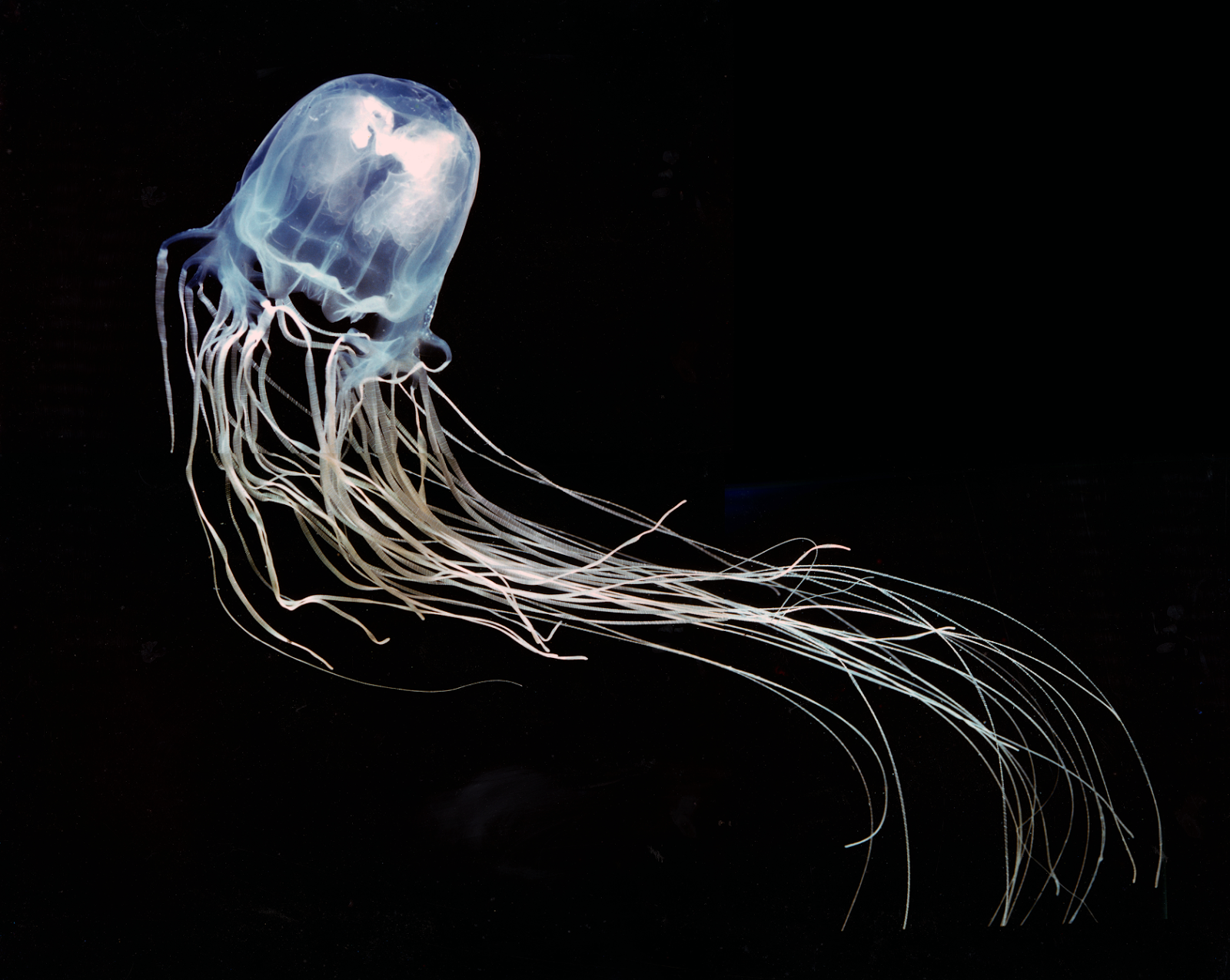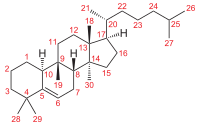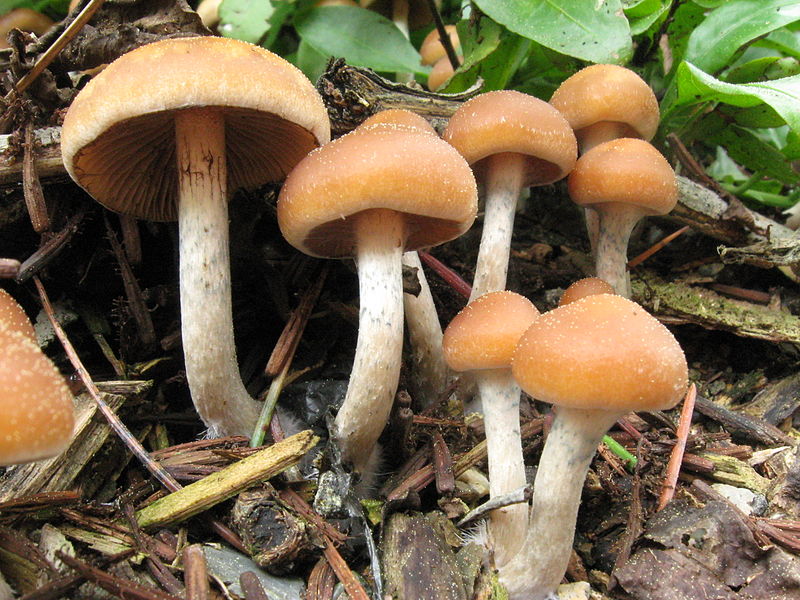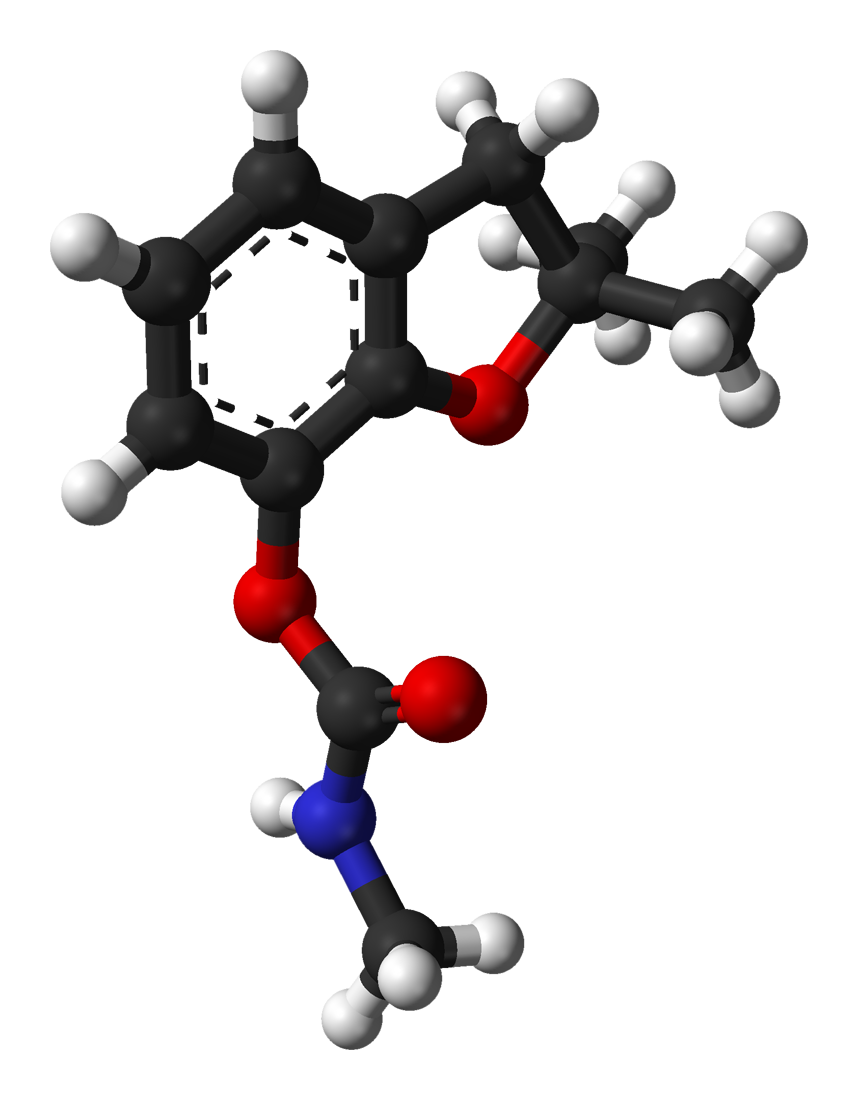Wednesday, December 14, 2016
Companies always cash in on someone elses misfortune
There has been a case of heavy metal poisoning in Flint, Michigan. The main culprit is lead from the old pipes and infrastructure. Many of these families are too poor to move anywhere else or but fresh water so there have been a steady increase of lead poisoning results. This resource says that the water was what the EPA considers hazardous waste and was usually above the 15 ppb and one sample was over 13,000 ppb.
The pharma companies have taken full advantage of this spike in lead poisoning cases. They have raised the price over the last two years by 2700%, something that used to be considered basic medical care is now skyrocketed. he medicine is an intravenous
treatment called Calcium EDTA. It is used for life threatening cases of
lead poisoning. Its price has remained stable for decades, but as the
crisis in Flint raged on, Valeant acquired the drug and jacked up the price from $950 a vial to $26,927!
Friday, December 9, 2016
What is the Sea Wasp?
Do you know what the most dangerous/poisonous marine animal is? Box jellyfish have tentacles covered in nematocysts, which are tiny darts filled with poison. People or animals that come into contact with this jellyfish, may experience paralysis, cardiac arrest, or even death. However, there are only a select few of these box jellyfish that contain the venom. This particular type of jellyfish is known as the Sea Wasp.

http://oceanservice.noaa.gov/facts/box-jellyfish.html
http://oceanservice.noaa.gov/facts/box-jellyfish.html
The New Street Drug with Crazy Potency
"This new drug, W-18, is a synthetic opiate that gives a person heroin-like high, buts its 100 times more powerful than fentanyl and 10,000 times more powerful than morphine." It is thought to be produced in China and then shipped to North American through different services, such as FedEx. This drug has been found throughout Canada, however, there have been incidents of it being sold in the United States.


http://www.newser.com/story/223995/m-18-the-new-street-drug-with-crazy-potency.html
Top 10 Most Dangerous Street Drugs in the World
There are many drugs throughout the world. According to this article, these are the top ten street drugs that are corrupting our society. The article gives descriptions of each individual drugs, as well as, the side effects that it can cause health wise.
Top 10, 1 being the least popular.
1) Purple Drank
2) Scopolamine
3) Heroin
4) Crack Cocaine
5) Crystal Meth
6) AH - 7921
7) Flakka
8) Bath Salts
9) Whoonga
10) Krokodil
http://www.independent.co.uk/news/uk/home-news/from-krokodil-to-purple-drank-the-worlds-10-most-deadly-street-drugs-a6719541.html
6 Surprising Facts about THC
THC is a primary ingredient in marijuana and is responsible for the high. However, THC has been found to have medical benefits for some people.
6 Surprising Facts:
1) THC was discovered in 1964
2) THC is one of more than 60 active ingredients in cannabis.
3) THC is used in FDA approved pharmaceuticals.
4) THC can protect brain cells and stimulate their growth.
5) Chemicals like THC are found in the human body
6) THC does not always come with a high
http://www.leafscience.com/2014/03/16/6-surprising-facts-thc/
Tuesday, December 6, 2016
Be catious of your neighbors
In Germany a couple were given a gift of zucchini from their neighbors. They quickly made the batch into a stew to use the vegetable while it was fresh. The stew tasted bitter but nothing they couldn't handle and thought nothing of it. Later on they each got sick and went to the hospital after the husband's face had turned yellow. She was able to be treated but like all good husbands, he ate more and ended up dying. The culprit, cucurbitacins. http://www.thedailymeal.com/heidelberg-germany-zucchini-toxin-poison/82315
These are a toxin found in gourds and pumpkins, they have been bred out of most public sources but a family farm that uses their own seeds can still see some cases. The bitter taste also helps keep people from eating a whole lot of it. They are part of the plant's natural defenses against herbivores.

These are a toxin found in gourds and pumpkins, they have been bred out of most public sources but a family farm that uses their own seeds can still see some cases. The bitter taste also helps keep people from eating a whole lot of it. They are part of the plant's natural defenses against herbivores.

Opiods are poisoning our Youth
Researchers have gathered all the evidence and found that from 1997 to 2012 opiod hospitalizations from kids age 1-4 have risen by 205% while ages 15-19 rose by 151%. The difference between these numbers isn't a whole lot, but the reasoning is. Most of the kids ages 1-4 were accidental ingestion, while the older group took these drugs in an act of self harm. The fact that these numbers are going up could be due to the rise in use, in 2012 almost 259 million painkillers were prescribed
.
Some safety measures have been proposed like education and better child proof lids. Parents need to treat pills like dangerous drugs because in the wrong hand that is what they are. http://www.nytimes.com/2016/10/31/well/family/opioid-poisonings-rise-sharply-among-toddlers-and-teens.html?rref=collection%2Ftimestopic%2FPoisoning%20and%20Poisons&action=click&contentCollection=timestopics®ion=stream&module=stream_unit&version=latest&contentPlacement=1&pgtype=collection&_r=0
.
Some safety measures have been proposed like education and better child proof lids. Parents need to treat pills like dangerous drugs because in the wrong hand that is what they are. http://www.nytimes.com/2016/10/31/well/family/opioid-poisonings-rise-sharply-among-toddlers-and-teens.html?rref=collection%2Ftimestopic%2FPoisoning%20and%20Poisons&action=click&contentCollection=timestopics®ion=stream&module=stream_unit&version=latest&contentPlacement=1&pgtype=collection&_r=0
Bird Flu is Back!
The bird flu much like many other flu's have came and went across
America and never returned, until now. The H5N2 virus that killed
millions of poultry has been found for the first time in 14 months. http://www.foxnews.com/health/2016/08/26/devastating-bird-flu-strain-found-in-us-wild-duck-usda-says.html
This is a highly pathogenic strain which means it is very deadly to domesticated animals but wild animals can show little to no symptoms. Humans require very high contact with the infected birds to risk getting it and currently no humans have contracted this strain. It will be interesting to see this fall if the migration of these wild birds spreads the H5N2 and we have another large death among our food supply.

This is a highly pathogenic strain which means it is very deadly to domesticated animals but wild animals can show little to no symptoms. Humans require very high contact with the infected birds to risk getting it and currently no humans have contracted this strain. It will be interesting to see this fall if the migration of these wild birds spreads the H5N2 and we have another large death among our food supply.

Blue Baby Syndrome and Nitrates
Recently there has been a lot of fuss in Iowa about water quality. There is even a lawsuit going on and I bet many of you don't even
know about it. Since we started using anhydrous ammonia as fertilizer
there have been many environmental implications. One of them is nitrogen
run off into our water supplies, mostly the rivers. These cannot be
filtered out that easily and when the concentration is high enough end
up in our drinking water. A common illness associated with nitrate
poisoning is called blue baby syndrome. This is an issue that concerns
pregnant women in Des Moines recently. Here is an article outlining the
current nitrate issue. http://www.desmoinesregister.com/story/money/agriculture/2016/09/29/elevated-nitrates-linked-cancers-birth-defects-environmental-group-says/91228894/
This syndrome occurs when hemoglobin Iron(Fe+2) is oxidized to methemoglobin(Fe+3) and it cannot transport oxygen to the rest of the body. This causes cyanosis and a pale blue color in the skin of infants. The relation between this and nitrate infected water has been known since the 1940s. The following is a scholarly article about how it affects babies. https://www.ncbi.nlm.nih.gov/pmc/articles/PMC1638204/pdf/envhper00308-0137.pdf

This syndrome occurs when hemoglobin Iron(Fe+2) is oxidized to methemoglobin(Fe+3) and it cannot transport oxygen to the rest of the body. This causes cyanosis and a pale blue color in the skin of infants. The relation between this and nitrate infected water has been known since the 1940s. The following is a scholarly article about how it affects babies. https://www.ncbi.nlm.nih.gov/pmc/articles/PMC1638204/pdf/envhper00308-0137.pdf

Sunday, December 4, 2016
Psilocybin: New use for a recreational hallucinogen
 | |||||||
| Psilocybe cyanofriscosa |
Image created by Alan Rockefeller at Mushroom Observer
Hallucinogenic natural products and other substances used
for recreational purposes are often classified as Schedule 1 drugs. An
unintended consequence of this is that legitimate biomedical research
concerning such substances is curtailed, in large measure, due to real or
perceived legal, bureaucratic and societal pressures. Psilocybin, a natural product produced by mushrooms in the genus Psilocybe, is a case in
point. Eugenia Bone, in a 2014 New York Times article, refers to the
marginalization of research into the effects of this psychoactive drug as a
“cultural taboo” and notes that it has taken over four decades for the
pressures against the study of this drug to relax to a point where scientists
feel they can now examine its potential biomedical application.
Recent research by R. R. Griffiths and colleagues (2016) at Johns Hopkins University demonstrated that six months following treatment with psilocybin about 80% of participants (N=51), all of whom were cancer patients, showed "clinically significant decreases in depressed mood and anxiety".
When psilocybin is ingested it is metabolized to psilocin which is the pharmacologically active compound. In addition to causing transient hallucinations and moderately long term relief of anxiety and depression, initial physiological effects of psilocybin may include pupil dilation, changes in heart rate and blood pressure, nausea, tremor and alterations in coordination.
It is reasonable to suggest that much more information concerning psilocybin and psilocin would have been preformed had psilocybin not been classified as a Schedule 1 drug. Nevertheless, there is considerable information concerning the metabolism and action of these substances. Especially interesting is the substantial structural resemblance of psilocybin and psilocin to the natural neurotransmitter serotonin. Indeed many of the effects of psilocybin and psilocin are due to their interactions with serotonin receptors.
References
Bone, Eugenia (New York Times, Sunday Review Nov. 29, 2014)
Griffiths, R. R., M. W. Johnson, M. A. Carducci, A. Umbricht, W. A. Richards, B. D. Richards, M. P. Cosimano, and M. A. Klinedinst. "Psilocybin produces substantial and sustained decreases in depression and anxiety in patients with life-threatening cancer: A randomized double-blind trial." J Psychopharmacol 30 (2016).http://jop.sagepub.com/content/30/12/1181.abstract
Passie, T., Seifert, J., Schneider, U., & Emrich, H. M. (2002). The pharmacology of psilocybin. Addiction biology, 7(4), 357-364.
Quentin A-M. (1960). La Psilocybine en Psychiatrie Clinique et Experimentale [Psilocybin in Clinical and Experimental Psychiatry] (PhD thesis) (in French). Paris, France: Paris University Medical Dissertation.
Sunday, November 27, 2016
Vanishing Vermin or Festering Fowl?
Image Credit: https://upload.wikimedia.org/wikipedia/commons/f/f8/Carbofuran-from-xtal-3D-balls.png
The environmental toxin carbofuran has been banned in the EU since 2001. It is thought to being illegally used to control mice and rats, so birds of prey are suffering secondary poisoning by consuming tainted rodents.
Carbofuran is an acetylcholinesterase inhibitor in the same class as the V series nerve agents. It is one of the most toxic pesticides, only surpassed by aldicarb and parathion.
Concerns over the impact on non-target organisms and children is what has led to the banning of carbofuran.
http://www.bbc.com/news/uk-northern-ireland-38084466
Saturday, November 19, 2016
Poison frogs may lead to new medications
 | ||||
| Phyllobates terribillis |
Congenital insensitivity to pain is caused by the same protein that this poison acts on, as well as other disorders like "man on fire" syndrome. The hope is that research on this poison will lead to effective treatments against these disorders and/or development of drugs that prevent pain, similar to how cone snail venom was used to develop ziconotide.
This article can be found in its entirety at http://www.npr.org/sections/health-shots/2016/11/17/502324984/chemists-recreate-deadly-frog-poison-in-the-lab
Photo credit: Tambako the Jaguar, Getty Images
Tuesday, November 15, 2016
Exon Skipping Drugs
 |
|
Eteplirsen CAS#
1173755-55-9
|
In individuals with Duchenne Muscular Dystrophy, mutations
in exons result in production of nonfunctional dystrophin a protein that
normally prevents damage to muscle proteins when they contract. A new drug, Eteplirsen (Brand name Exondys),
that promotes exon skipping has recently been approved to treat individuals
with this form of muscular dystrophy. Its approval by the FDA, however, is controversial,
in part, because of the small sample size used to assess the efficacy of the
drug. Also of concern is the extraordinary expense ($300,000/year) of this drug.
The Chemical and Engineering News (see link below) provides a nice overview
concerning this drug and its controversial approval by the FDA.
Jarvis, L.M. (2016) Aftereteplirsen: Duchenne stakeholders contemplate what comes next, Chemical and Engineering News, November 14, 2016, pp. 26-41.
Eteplirsen Image source: (http://lgmpharma.com/product/eteplirsen/)
Monday, November 14, 2016
Hannalgesin: An alpha-neurotoxin from the King Cobra and it Potential for Analgesia
Envenomation by poisonous snakes is often accompanied by
substantial pain at the site of the bite. Thus it is somewhat counterintuitive
that some deadly venoms have components that have excellent potential for drug
development as analgesics (i.e., pain
relievers).
Hannalgesin, a component of king cobra (Ophiophagus hannah) venom, is a potent α-neurotoxin.
However, THA903 an undecapeptide (
11-amino acid peptide) derived from Hannalgesin appears to have substantial analgesic
activity without lethal consequences at therapeutic doses. The peptide is water
soluble and can be administered sublingually.
Hannalgesin is a three-finger toxin (3FTx). It was first purified
and sequenced in 1994 by Song et al.
Subsequent investigations by Kimi’s group at the National University of
Singapore resulted in the development of THA903 and they established that the
analgesic effect is due to a relatively short sequence near the C-terminal end
of the protein.
The precise mechanism responsible for analgesia is not
completely known. However, it seems reasonable that analgesic peptides may be agonists
for opiod receptors. The primary sequence for Hannalgesin is presented below.
The sequence NPFPT near the C-teminus seems particularly important for
analgesia.
TKCYVTPDVKSETCPAGQDICYTETWCDAWCTSRGKRVNLGCAATCPIVKPGVEIKCCSTDNCNPFPTRKRP
Primary Structure of Hannalgesin
References
Gopalakrishnakone, P., Pu, X. C., Wong, P. T.
H., Gwee, M. C. E., & Kini, R. M. (2003). U.S. Patent No. 6,613,745.
Washington, DC: U.S. Patent and Trademark Office.
Kini, R. M., & Doley, R. (2010). Structure, function and evolution of three-finger toxins: mini proteins with multiple targets. Toxicon, 56(6), 855-867.
Song, J., Chung, M. C. M., Xiong, Y., Wang, W. and Pu,
X. (1994) Purification, sequence and pharmacological studies of a new alpha-neurotoxin from Ophiophagus
hannah venom. Toxicon 32, 537-538 (Abstract).
Pu, X. C., Wong, P. T. H., & Gopalakrishnakone, P. (1995). A novel analgesic toxin (hannalgesin) from the venom of king cobra (Ophiophagus hannah). Toxicon, 33(11), 1425-1431.
Illustration of king cobra by Sir Joseph Fayer, 1871 (Wikimedia Commons)
Professor R. Manjunatha Kini's website
Professor R. Manjunatha Kini's website
Sunday, November 13, 2016
Spider Venom to treat Muscular Dystrophy
Muscular dystrophy opens calcium ion channels, causing the degradation of muscle tissue. Researchers hope to use the venom of the Chilean rose tarantula to close the calcium ion channels and reverse the results of muscular dystrophy.
http://www.buffalo.edu/home/feature_story/good-venom.html
Glass Company Poisons Air Near Daycare Center
Children in Portland, Oregon at a daycare may be exposed to toxic amounts of selenium in the air, due to a local glass production facility. Concerns were brought up 7 months ago, but levels are still exceedingly high.
http://www.kgw.com/news/health/bullseye-glass-blamed-for-toxic-air-near-daycare-again/319528184
Arsenic in Iowa Well Water
36% of wells tested in Iowa contained arsenic, a naturally occurring elemental poison. Iowa does not mandate testing of private wells, so well owners must rely on voluntary testing. Other contaminants such as nitrates and bacteria can also cause serious health risks. Efforts to require testing of wells when homes are sold have met resistance from some legislators and residents and failed to pass recently.
http://www.desmoinesregister.com/story/news/2016/08/26/testing-shows-danger-iowas-private-wells/88755480/
Three Envenomations by a King Cobra
.jpg) |
| King cobra (Ophiophagus hannah) |
King cobra (Ophiophagus hannah) envenomations are rare in the United States and
Great Britain. Recently (May 2, 2016), a North Carolina man (Ali
Iyoob) suffered a king cobra bite on
his wrist from a snake in his private collection. Instead of calling for
assistance he elected to drive himself to a hospital. On the way, he stopped
and called 911 to report that he had been bitten by a king cobra. An ambulance
was dispatched to his location on the highway. Suffering from classical signs
(nausea, blurry vision, perfuse perspiration, anxiety) of king cobra
envenomation he was taken to University of North Carolina Hospitals for
treatment. King cobra venom can also affect the nervous system causing pain,
dizziness, paralysis and respiratory failure. A problem treating envenomation
by exotic animals is that most hospitals do not routinely stock the appropriate
antivenom. In ali lyoob’s case, a source of of antivenom was located at the
Riverbank Zoo in Columbia, South Carolina. After a wait of several hours the
antivenom arrived and lyoob was successfully treated. Treatment of snakebite by
the appropriate antivenom is often dramatically successful. On the Facebook
page of the Reptile Rescue of the Carolinas, lyoob has been described as “a
biologist, respected reptile enthusiast and RROTC Liason…”
In an earlier envenomation at the sea aquarium in Myrtle Beach, South Carolina, a professional reptile handler suffered a king cobra bite on his right thumb at 10:15 AM. He drove himself to the regional medical center, arriving at 10:30 AM. Initial complaints included severe pain, nausea and swelling of the thumb. Subsequently, edema and erythema extending to the wrist ensued. The palm was especially involved. During the next 90 minutes neurological symptoms appeared, including bilateral ptosis, confusion, inability to swallow (dysphagia), slurred speech, generalized flaccidity and a decline in oxygen saturation. Because of respiratory paralysis, an endotracheal tube was inserted and mechanical ventilation was initiated. This occurred 2 hours after envenomation. Antivenom was administered starting at 2 PM and finishing at 4 PM. Seven hours after envenomation, the patient was alert and removed his endotracheal tube. The next morning most of the neurological symptoms were resolved and the patient left the hospital against medical advice.
In an earlier envenomation at the sea aquarium in Myrtle Beach, South Carolina, a professional reptile handler suffered a king cobra bite on his right thumb at 10:15 AM. He drove himself to the regional medical center, arriving at 10:30 AM. Initial complaints included severe pain, nausea and swelling of the thumb. Subsequently, edema and erythema extending to the wrist ensued. The palm was especially involved. During the next 90 minutes neurological symptoms appeared, including bilateral ptosis, confusion, inability to swallow (dysphagia), slurred speech, generalized flaccidity and a decline in oxygen saturation. Because of respiratory paralysis, an endotracheal tube was inserted and mechanical ventilation was initiated. This occurred 2 hours after envenomation. Antivenom was administered starting at 2 PM and finishing at 4 PM. Seven hours after envenomation, the patient was alert and removed his endotracheal tube. The next morning most of the neurological symptoms were resolved and the patient left the hospital against medical advice.
In 2006 the
first recorded envenomation by a king cobra was reported in Great Britain. A 22
year old man was bitten on his left index finger. Upon arrival at the British
equivalent of an emergency room, the patient was lucid but complained of
dizziness. Soon, eyelid ptosis developed as did other symptoms, including
shortness of breath and the inability to swallow. The patient was then
intubated and transferred to the intensive care unit where he displayed
hypertension and an erratic pulse. King cobra specific antivenin was
administered when it arrived. This was six hours after the bite occurred. Anaphylaxis
is a possible complication due to snake antivenom administration. This occurred and was
successfully treated and antivenom administration can continued at a slower
rate. Seventeen hours after the bite symptoms began to resolve and the endotracheal
tube was removed. Twenty-four hours after the bite, the patient was discharged
from the intensive care unit and a plastic surgeon continued treatment for the
ischemic damage done to his finger.
These envenomations are remarkable in that all were rapidly and successfully treated with king cobra specific antivenom. Without access to venom, death is a very reasonable probability due to respiratory paralysis. It is also worth noting that all of these envenomations occurred in males who were/are skilled in the handling of venomous snakes.
King cobra antivenom is made by the Thia Red Cross and the Central Research Institute in Kasauli, India. In the United States, king cobra antivenom is available from the Miami-Dade Fire Rescue Venom Response Unit (Emergency telephone number: 786-336-6600). Presumably, zoos that maintain king cobras in their herpetological collections also possess stocks of king cobra antivenom.
These envenomations are remarkable in that all were rapidly and successfully treated with king cobra specific antivenom. Without access to venom, death is a very reasonable probability due to respiratory paralysis. It is also worth noting that all of these envenomations occurred in males who were/are skilled in the handling of venomous snakes.
King cobra antivenom is made by the Thia Red Cross and the Central Research Institute in Kasauli, India. In the United States, king cobra antivenom is available from the Miami-Dade Fire Rescue Venom Response Unit (Emergency telephone number: 786-336-6600). Presumably, zoos that maintain king cobras in their herpetological collections also possess stocks of king cobra antivenom.
References and links
NC man bitten by cobra sentenced after 18 poisonous reptiles found in home, officials say
Image by RedGazelle15 on WikiMedia Commons
Thursday, November 10, 2016
Pain Relief From the Venom of the Cone Snail (Conus magus)
 |
| Conus magus |
| Ziconodide (Prialt) |
All members of the genus Conus are venomous. Conotoxins are peptides containing 10 to 30 amino acids. In general, each conotoxin contains one or more disulfide bonds.
Five types of conotoxins ( (α(alpha)-, δ(delta)-, κ(kappa)-, μ(mu)-, and ω(omega)- conotoxins)) have been described. Of interest is ω-conotoxin. This conotoxin inhibits N-type voltage-dependent calcium channels. Because N-type voltage-dependent calcium channels transmit the pain response, its inhibition ameliorates pain. That is to say ω-conotoxin is a good target compound in the search for new and better analgesics. In fact, the pain-reliever ziconodide (Prialt) is the synthetic version of ω-conotoxin M VII A.
An overview of the synthesis of ziconolide can be found by clicking on the following link.
Unlikely Poisonous animals
This article explores five unlikely animals, that have evolved the ability to be extremely toxic in the wild.
2. Blue-ringed octopus: the most venomous marine animal whose bite will leave a person paralyzed and on the verge of death if not treated quickly.
3. Duck-billed platypus: a unique creature already, during mating season the males produce venom that can be secreted by spurs on the hind limbs.
4. Cone snails: sea dwellers with temping shells to pick up, have spikes on the outside that can lead to paralysis.
5. Komodo dragon: always considered non-venomous, a new debate has sparked when glands of a dragon were dissected and analyzed to be a host to many toxic chemicals.
Toxic Parsnip
A wild poisonous weed has started to spread quickly throughout Iowa and the Midwest. Parsnip is becoming increasingly prevalent in road side ditches and along trails.
Coming into contact with the oils in this plant can cause severe burning and itching. This is due to the sap in the plant that once exposed to sunlight, starts to break down skin and tissue. This leads to severe sunburn and hypersensitivity.
Toxic Algal Bloom In Utah
 |
| Microcystin, a cyanotoxin |
There was a toxic algal bloom contaminating the waters in Utah lake in Salt Lake City. This algal bloom was caused by the increased levels of phosphorus being dumped into the water by seven companies. 330 individuals have presented with symptoms from exposure to toxic levels of cyanobacteria, and 100 ducks have been found dead. Symptoms in humans include: headaches, abdominal pain, diarrhea, vomiting, respiratory problems, and skin irritations. Barbara Crouch, director of the Utah Poison Control Center has stated, "There is not a lot of human health information known about this." Currently the state is taking precautions and stopping the use of the contaminated water for irrigation of farmers' plants. Understandably this is causing some upheaval amongst the farmers but cross contamination into the drinking water and to food sources could potentially endanger hundreds of other individuals.
Killer Bees
"Closeup of Africanized honey bees (AHBs) surrounding a
European queen
honey bee (EHB), marked with a pink dot for identification."
Wikimedia Commons
(Scott Bauer, USDA Agricultural Research Service, United States)
Click on the link to see a more complete breakdown of the deadliest animals.
10 Crazy Drugs You Didn't Know Existed
An interesting article on some of the most outrageous drugs that have been developed or discovered. Often times these drugs have not taken off on the streets because they are either too potent for humans to consume, or they cause the opposite of psychedelic affects and actually induce some depression and psychotic breaks.
One example is a common house hold spice, nutmeg. It takes a very high dose to have any hallucinations, but it is a legal alternative. Unfortunately nutmeg usually leaves a person feeling anxious and with a sense of doom. There are also numerous negative physical side effects. This all helps to explain why nutmeg has not taken off as a potential schedule 1 drug.
There are nine other crazy drugs to check out and see the effects to the human body, like cooking the user from the inside.
Wednesday, November 9, 2016
Intravenous caffeine can be used to treat migraine headaches.
 |
| Caffeine |
 |
| Ketorolac
|
Sometimes withdrawal headaches are caused when individuals, who typically consume substantial amounts of caffeine containing beverages, abruptly stop this practice. Thus it is interesting that, in some cases, caffeine can be used to treat headaches. The mechanisms by which this occurs is not completely clear.
Ketorolac is a non-steroidal anti-inflammatory. Like aspirin, ketorolac is a cyclooxygenase inhibitor and thus inhibits the synthesis of prostgalandins and the attendant pain response due to their synthesis.
Tuesday, November 8, 2016
Drugs in Popular Culture: Lucy in the Sky with Diamonds
 |
| LSD |
A lot of songs reference drugs. It has been claimed that Lucy in the Sky with Diamonds, a song on The Beatles 1967 album, Sgt. Pepper's Lonely Hearts Club Band, is a mnemonic for LSD. John Lennon denied this. Tim Kasser's blog and his book Lucy in the Mind of Lennon provides in-depth detail concerning this song.
Seven things you didn’t know about “Lucy in the Sky with Diamonds".
Lucy in the Mind of Lennon
Heroin was once recommended as a treatment for morphine addiction.
Monday, November 7, 2016
"A silver lining to what is absolutely a tragedy"
The sheer volume of deaths due to heroin overdoses has led to an increase in donor organs for transplant.
So many people are dying of drug overdoses that they’re easing the donated organ shortage
First Venomous Frog Discovered
Corythomantis greening
When one thinks about venomous creatures, frogs are not the first animals to come to mind. It is true that some frogs produce very toxic skin secretions. However, frogs that inject a venom have been described only recently. Greening's frog (Corythomantis greening) and Bruno's casque-headed frog (Aparasphenodon brunoi) both have bony spines on their skulls that pierce the skin and deliver their toxic skin secretions. Note that a toxic substance is a venom if it is injected into the target species.
Jared, C., Mailho-Fontana, P. L., Antoniazzi, M. M., Mendes, V. A., Barbaro, K. C., Rodrigues, M. T., & Brodie, E. D. (2015). Venomous frogs use heads as weapons. Current Biology, 25(16), 2166-2170.
http://www.bbc.com/earth/story/20150806-first-venomous-frogs-discovered
Image attribution: G.A. Boulenger
By Boulenger, G.A. - Boulenger, G. A. 1896. Descriptions of new batrachians in the British Museum. Annals and Magazine of Natural History, Series 6, 17: 401–406, Public Domain, https://commons.wikimedia.org/w/index.php?curid=34513543
Image attribution: G.A. Boulenger
By Boulenger, G.A. - Boulenger, G. A. 1896. Descriptions of new batrachians in the British Museum. Annals and Magazine of Natural History, Series 6, 17: 401–406, Public Domain, https://commons.wikimedia.org/w/index.php?curid=34513543
Snake Bite Fatalities in the United States
Photo by Mark Bratton
"According to the Centers for Disease Control and Prevention, of the 7,000 to 8,000 people bitten by venomous snakes in the U.S. every year, only 5 die."
Snake Bite Death Statistics Worldwide
Crotalus scutulatus
"According to the Centers for Disease Control and Prevention, of the 7,000 to 8,000 people bitten by venomous snakes in the U.S. every year, only 5 die."
Snake Bite Death Statistics Worldwide
Krokodil
 |
| Krokodil (desmorphine) |
Krokodil (desmorphine)
This is one nasty drug. Note its similarity to morphine. The flesh-eating effect of this drug is probably due to to contaminants introduced during its manufacture. These contaminants are often not removed in clandestine laboratories that make this drug for recreational use (abuse),
Ketamine
Ketamine has substantial notoriety as a street or party drug. It has been described as a "dissociative anesthetic: a drug that distorts perception of sight and sound and produces feelings of detachment (dissociation) from the environment and self."
http://www.drugfreeworld.org/drugfacts/prescription/ketamine.html
Most recently, ketamine has been put on "fast track" approval by the U.S. Food and Drug Administration as a medication to treat depression. It has been described as " the first new treatment for major depressive disorder in about half a century."
http://www.cnn.com/2016/08/17/health/ketamine-depression-treatment/index.html
Compared to other drugs of abuse, fatalities due to ketamine use or overdose are relatively rare, but they do occur. Ketamine has also been used as a date rape drug.
A critical review of ketamine can be found at the following web site.
http://www.who.int/medicines/areas/quality_safety/4.3KetamineCritReview.pdf
Subscribe to:
Comments (Atom)
















